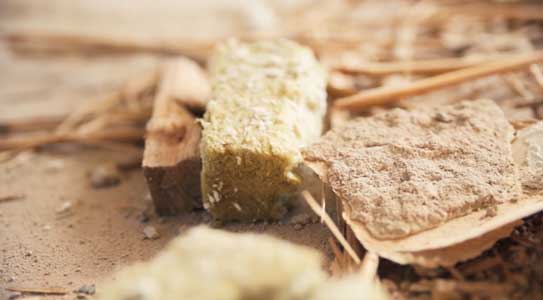Removing mineral wool from before 1997: Special precautions and best practices
Removal of older insulation materials such as mineral wool (ie, glass wool and stone wool) from buildings constructed before 1997 involves a number of special considerations. In many countries, including Denmark, there are specific rules and guidelines for handling such materials, primarily due to health and safety concerns. This article seeks to highlight the special precautions that must be considered when faced with such a task.


Lars Christiansen
Director of Isoleringsmaskinen A/S
31.09-2023

Health risks
Mineral wool from before 1997 may contain substances that can potentially be harmful to health. This includes but is not limited to:
Formaldehyde: Used as a binder and can cause irritation and allergic reactions.
Asbestos: Although asbestos is primarily associated with other building materials, older insulation materials can sometimes contain traces of this carcinogen.
Legislative Framework
In 2021, the Ministry of Employment approved an executive order that demonstrated legal requirements and rules for handling of insulation materials with mineral fibres.
Before removal, a professional assessment is often necessary to identify any harmful substances. Mineral wool comes under the Norwegian Labor Inspection Authority's notices for carcinogenic materials.
Management of risks
Special precautions
Personal Protective Equipment (PPE): Workers must wear appropriate PPE, including masks, gloves and protective suits.
Demarcation of the Work Area: The area must be clearly marked and isolated to prevent the spread of dust and fibres.
Ventilation: Provide adequate ventilation, but avoid spreading potentially hazardous particles to other areas.
Moisture: It is often recommended to moisten the material before removal to minimize the release of dust and fibers.
Waste Management: All material must be placed in approved, sealed containers and disposed of as hazardous waste in accordance with local regulations.
Professional intervention
Due to the risks involved, it is often mandatory to have qualified and certified professionals to carry out the work. This ensures that all precautions are strictly followed and that the waste is disposed of correctly.
Removing mineral wool from buildings built before 1997 is a complex process that requires special precautions. It is not only important to comply with regulatory requirements, but also to consider the potential health risks to those doing the work and those staying in the building. By following best practices and rules, the risk can be minimized while the quality of the work is ensured. It is therefore essential to consult with experts in the field and adhere to all safety protocols to ensure the safe and effective removal of these older insulation materials.r
Are you still in doubt about something?
Still stuck with a question? Then you are very welcome to contact us by phone: +45 31 36 62 86, or send an email to iso@isoleringsmaskinen.dk
You can also fill out our form by clicking the button below.
